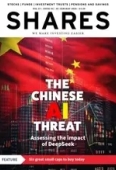Archived article
Please note that tax, investment, pension and ISA rules can change and the information and any views contained in this article may now be inaccurate.
Emerging markets: Chinese stimulus efforts, the Indian market and Ukraine

1. China stimulus: Equity markets in 2025 are likely to be dealing with the after-effects of last year’s election outcomes and subsequent political shifts. Of note for emerging markets in the year ahead are the risks of higher US tariffs and policy-driven volatility as the second Trump administration enters office. China is attempting to minimize the risks inherent within geopolitical tensions by keeping up with its policy support. In 2025, we may see signs of macro stabilisation from these policies, possibly allowing scope for a cyclical recovery. Our China portfolio manager, however, feels that there may be some potential disappointment until the release of key details of upcoming policies, which will likely happen in March 2025. However, he notes that stimulus has shifted from targeting supply to boosting demand.
2. Indian market: The Indian economy and stock market are less coupled with the United States relative to other EMs. Due to concerns of an economic slowdown and high valuations, we do not rule out the possibility that India’s equity market will correct. However, our engagement with corporations in India makes us optimistic, as companies are reporting slightly better business starting from October 2024, with most companies emphasising that there is no further slide in growth. We see some stabilisation here. We also note the Franklin Templeton semi-annual survey of our fund managers globally singled out India as a market they favour in 2025.
3. Ukraine: President Trump has spoken of swiftly resolving the Russia-Ukraine war after his inauguration. Investors will focus on the likelihood of a peace deal incorporating an easing of US and European sanctions on Russia, among other concessions. A resumption of transit gas shipments via Ukraine to Central and Eastern European countries is also a focus area, given that Ukraine cut these flows on 1 January. Gas storage in Europe was elevated entering the Northern Hemisphere Winter, which reduces the risk of an energy price spike in the short term. Nevertheless, significantly higher energy prices in Europe relative to the United States remain a competitive disadvantage for the region.
Important information:
These articles are provided by Shares magazine which is published by AJ Bell Media, a part of AJ Bell. Shares is not written by AJ Bell.
Shares is provided for your general information and use and is not a personal recommendation to invest. It is not intended to be relied upon by you in making or not making any investment decisions. The investments referred to in these articles will not be suitable for all investors. If in doubt please seek appropriate independent financial advice.
Investors acting on the information in these articles do so at their own risk and AJ Bell Media and its staff do not accept liability for losses suffered by investors as a result of their investment decisions.
Issue contents
Dan Coatsworth
Feature
Great Ideas
Investment Trusts
My Portfolio
News
- Everyman Media plumbs the depths after registering all-time low
- Will Diageo shareholders be raising their glasses or downing their sorrows?
- Can Palantir keep the plates spinning as its valuation balloons?
- WH Smith hangs ‘for sale’ sign over historic High Street stores
- Sage Group hits new high after 2024 results and buyback spur gains
- US technology stocks tumble on surprise Chinese AI innovation
 magazine
magazine









